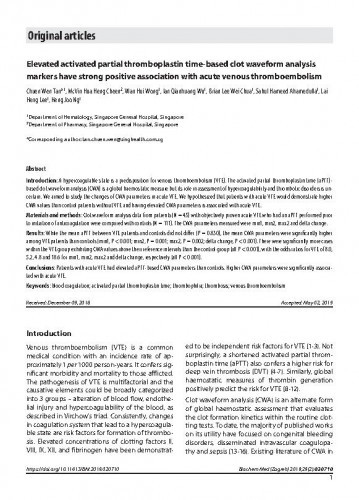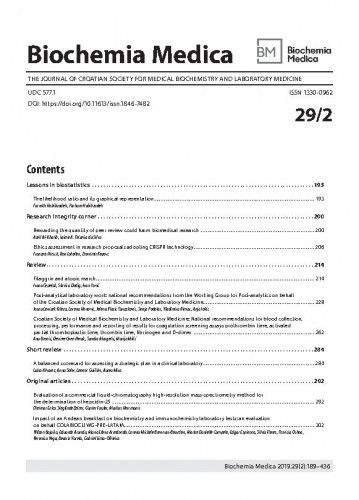A hypercoagulable state is a predisposition for venous thromboembolism (VTE). The activated partial thromboplastin time (aPTT)-based clot waveform analysis (CWA) is a global haemostatic measure but its role in assessment of hypercoagulability and thrombotic disorders is uncertain. We aimed to study the changes of CWA parameters in acute VTE. We hypothesized that patients with acute VTE would demonstrate higher CWA values than control patients without VTE and having elevated CWA parameters is associated with acute VTE.Materials and methods: Clot waveform analysis data from patients (N = 45) with objectively proven acute VTE who had an aPTT performed priorto initiation of anticoagulation were compared with controls (N = 111). The CWA parameters measured were min1, min2, max2 and delta change.Results: While the mean aPTT between VTE patients and controls did not differ (P = 0.830), the mean CWA parameters were significantly higheramong VTE patients than controls (min1, P <0.001; min2, P = 0.001; max2, P = 0.002; delta change, P <0.001). There were significantly more cases within the VTE group exhibiting CWA values above their reference intervals than the control group (all P <0.001), with the odds ratios for VTE of 8.0, 5.2, 4.8 and 18.6 for min1, min2, max2 and delta change, respectively (all P <0.001).Conclusions: Patients with acute VTE had elevated aPTT-based CWA parameters than controls. Higher CWA parameters were significantly associated with acute VTE.
Sažetak

 Biochemia medica : the journal of Croatian Society for Medical Biochemistry and Laboratory Medicine : 29,2(2019) / glavna i odgovorna urednica Daria Pašalić.
Biochemia medica : the journal of Croatian Society for Medical Biochemistry and Laboratory Medicine : 29,2(2019) / glavna i odgovorna urednica Daria Pašalić.